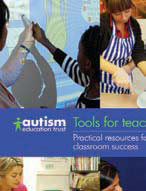These practical classroom strategies from Fintan O'Regan can benefit children with Attention Deficit Hyperactivity Disorder...
Most estimates state that Attention Deficit Hyperactivity Disorder (ADHD) is accompanied by Autistic Spectrum Disorder (ASD) in about 40% of cases. It’s also been pointed out that a number of characteristics are common both to children with ADHD and those with ASD. These typically include: • Receptive language and processing difficulties
• Social language problems
• Problems handling transitions and change
• Weaknesses in attention and time management skills
• Difficulties working in group situations
• Obsessive interests
• The need for structure and routines
• Whirling minds
• Difficulties in dealing with frustration
The management of individual students will always require personalised approaches. However, because of the overlap in symptoms associated with ADHD/ASD, teachers can - on occasion - use the same strategies to assist children with either or both learning styles. For example, children with ADHD/ASD require routines and rituals that develop structure and consistency of approach as this will:
• reduce anxiety;
• enhance motivation, confidence and self esteem;
• improve concentration and reduce distractions;
• facilitate independence.
When it comes to classroom layout, teachers will again need to consider the specific needs of the child. Even so, standard practice for children with ADHD/ASD would generally mean that staff would:
• identify a safe haven / quiet area;
• make sure the child is sat away from door, window, corridor;
• position the child away from resources not in use;
• sit the child near to the teacher;
• place the child by a student with good study and attention skills;
• provide a work station, if available;
• use a horseshoe layout for discussion.
Differences can and do occur, particularly when the teacher is giving children instructions; some students with ASD do not always make eye contact, whereas students with ADHD need directives to be delivered eye-to-eye. Also, students with ADHD may well prefer verbal approaches, and while both learning styles require visual aids to back this up it appears that children with ASD better trust Picture Exchange Communication Systems (PECS) in order to understand and clarify important information.
In terms of classroom management, the following suggestions might be employed for children with either ADHD or ASD.
 • Try to discover the child’s main distracters (auditory, visual, kinaesthetic, internal)
• Try to discover the child’s main distracters (auditory, visual, kinaesthetic, internal)
• Reduce expectations of seat work and offer alternative methods of task completion
• Ensure there are only one or two activities per page, avoid unnecessary pictures or visual stimuli, and leave white space
• Provide alternative environments for some tasks and activities
• Allow students to fiddle with an agreed object e.g. stress ball, concentrators, bar magnets, etc.
• Give short breaks between assignments
• Plan ahead for transition times
• Set variety of tasks and activities, including hands on activity where possible
It is often said that students with ADHD/ASD cannot learn successfully in mainstream schools, which is not the case – although they will both benefit from lessons that are stimulating and logical.
Some subjects may also prove more difficult than others, particularly when:
• there are no right or wrong answers;
• pupils are expected to debate and express their opinion;
• social understanding is required (i.e. group work);
• a lot of writing is involved;
• children need to listen to and process a large amount of verbal instruction, rather than visual presentation and practical involvement.
In summary, there are no ADHD or ASD children; just children that present symptoms that are specific to either disorder or common to both. The key, as ever, is the teacher’s ability to meet the needs of the child in front of them.
 The ideal teacher for a child with ADHD/ASD should be…
The ideal teacher for a child with ADHD/ASD should be…
1. Tough as nails about rules but always calm and positive
Both students with ADHD and those with ASD require a benign dictator who will develop a series of rituals and consistent approaches to learning and behaviour that allow the students to feel safe and secure.
2. Ingenious about modifying teaching strategies and materials in order to match a child’s learning style.
A child with ADHD/ASD won’t necessarily respond to the existing learning environment, so you may need to adapt it to cater for the learning style of the child.
3. Proactive regarding transitions or changes in schedule or activities
Both students with ADHD and those with ASD do not respond well to change and thus to be forewarned is to be forearmed. Warning cards that alert children to transitions can prevent them from becoming distressed about changes to routines and rituals. Teachers should also be proactive regarding non structured time - such as breaks and lunch - which may cause problems for students who find using social skills difficult.
4. Quick to develop a private signal system with a child to gently notify him when he is off task or acting inappropriately
Children with ADHD/ASD can be ‘high maintenance’. Therefore it’s important to develop your assertive discipline skills, which may need to be reinforced by non verbal communication techniques. This would include raising fingers to lips for silence and touching earlobes for listening. Teachers will need to be constantly scanning to manage the mood of the child as well.
5. Able to deal with group work in pragmatic way
The ideal group size for a child with ADHD/ASD is often one. However, a group of two can be fine; or a maximum of three if each student has a specific role or task to complete.
6. Keen to use technology to support learning
Both sets of students respond well to a 1-1 setting. Computers provide a multi-sensory experience, and the opportunity for children to control the pace at which they learn. What’s more, computers do not yell or have favourites.
Ultimately, the key point in successfully managing students with ADHD or ASD is to enjoy the differences that each learning style presents. Do not see them as a condition or problem, but as an opportunity to develop your teaching and learning management skills.
 A clear and practical guide for anyone teaching children on the autism spectrum…
A clear and practical guide for anyone teaching children on the autism spectrum…
The Autism Education Trust (AET) is publishing a new online resource for teachers supporting a young person on the autism spectrum. It will be available from mid April and is free to download. Around one in 100 children has autism and the new guide will be an invaluable tool for all teaching staff. It will feature over 70 autismspecific tools and resources including feelings boards, playtime activity schedules and homework checklists. Visit http://www.autismeducationtrust.org.uk or call 07795 667749.
5 Ways To Celebrate World Book Day
Ace-Classroom-Support
